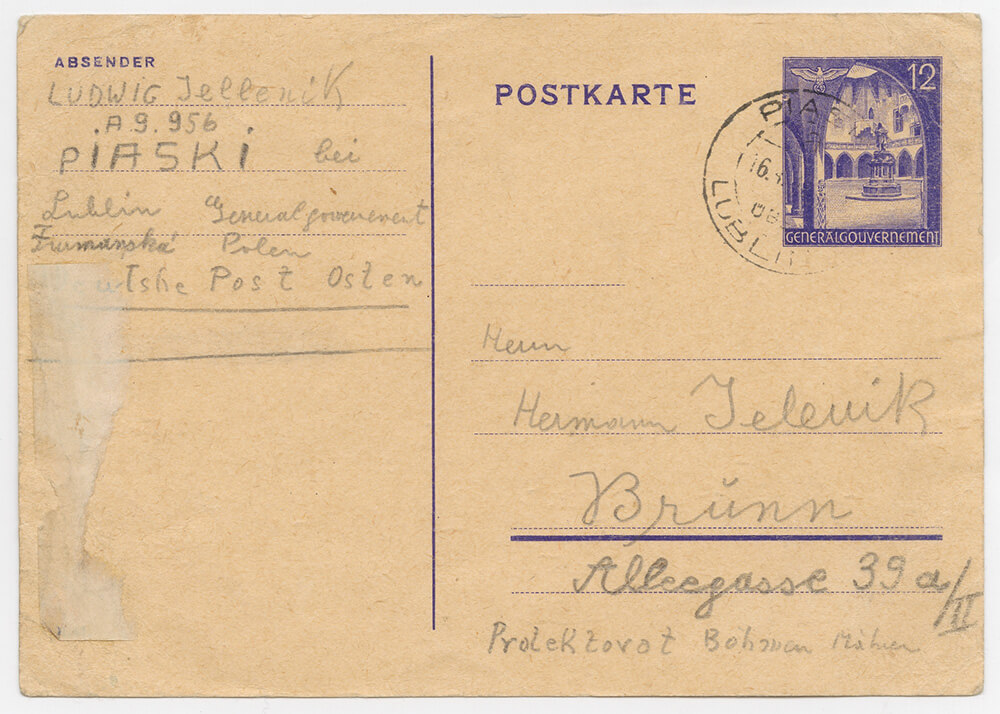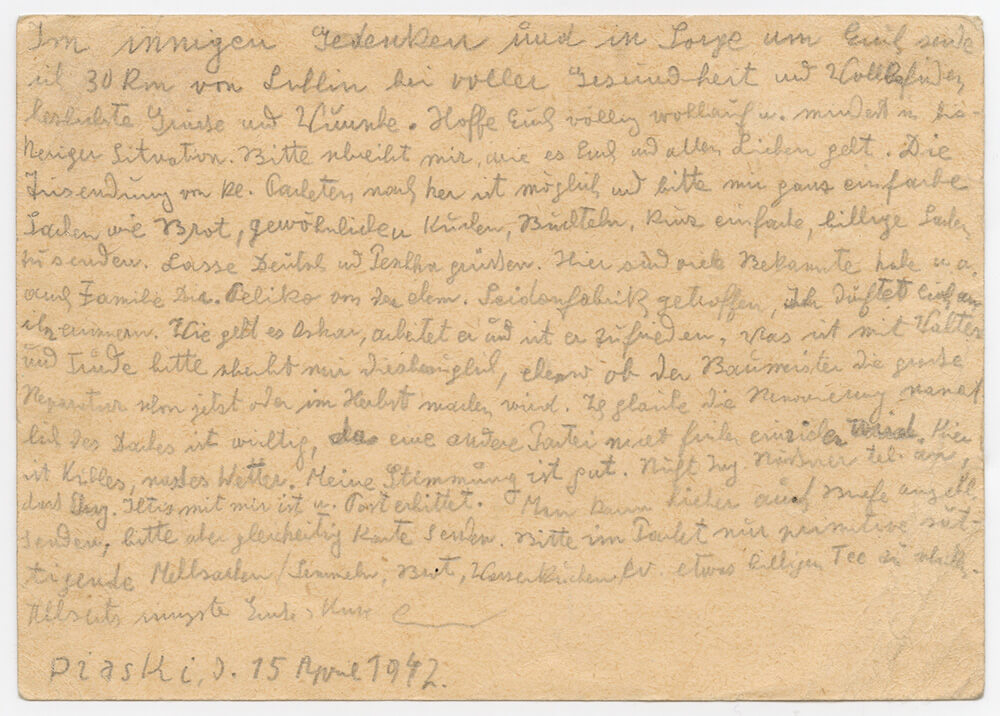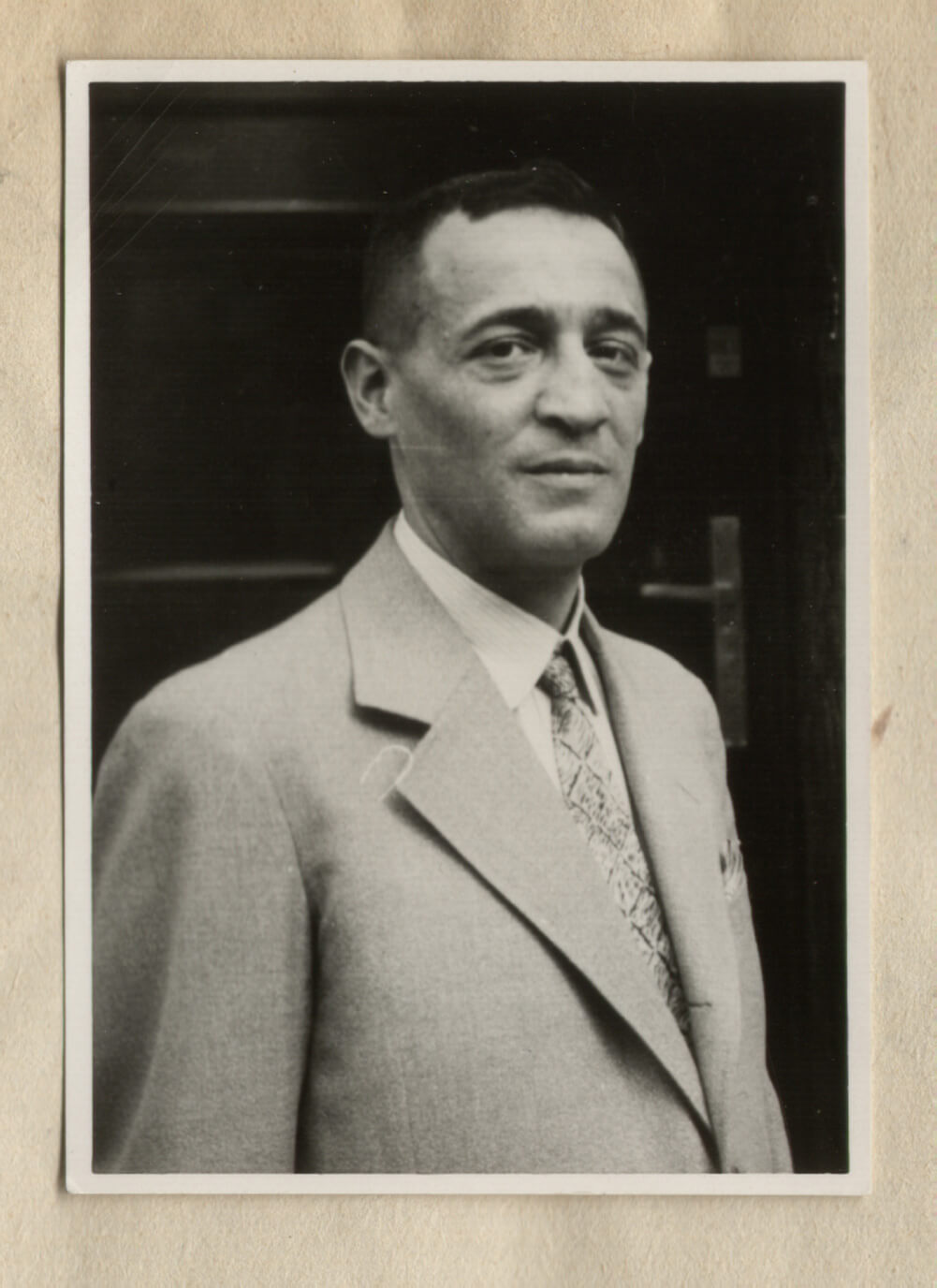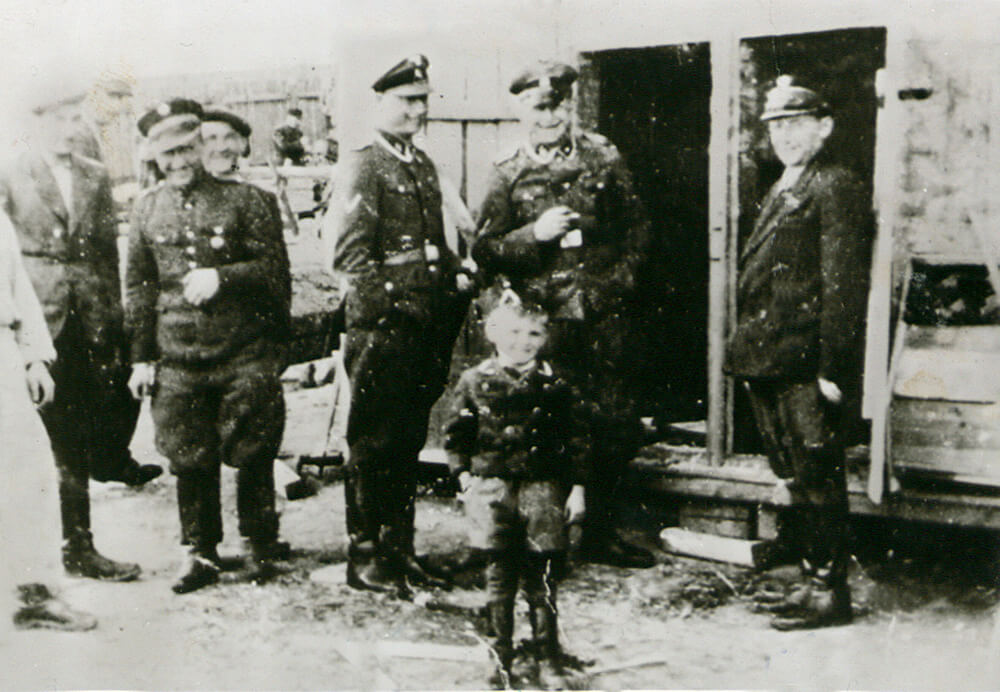Piaski


A letter dated 15 April 1942 from Ludvík Jellenik (b. 1899), Transport Ag, addressed to Hermann Jellenik in Brno. It is written that small parcels of ordinary cheap items, such as bread, cakes and buns, can be sent to the ghetto.
Jewish Museum in PragueInitially, several thousand Polish Jews were sent to the ghetto in Piaski near Lublin. They were followed by two transports from Szczecin in February 1940. There was permanent starvation in the ghetto. Most of the prisoners found it difficult to find work. The lack of sanitation facilities led to catastrophic hygienic conditions. A dysentery epidemic broke out. About 3,000 prisoners were taken away to the Bełźec death camp at the end of March 1942 to make room for new arrivals from the Protectorate and the Reich. It is estimated that more than 11,000 Jews were deported to the Piaski ghetto, about half of them from abroad. The Jewish council was subsequently expanded to include representatives from the foreign transports. The locals considered the Jews from abroad to be wealthy and saw them as different in every way, from their clothes, appearance, culture and behaviour. The grudges and disputes between the two groups of prisoners were skilfully exploited by the Nazis. The Jewish police were forced to cooperate in the organization of deportations.
In April 1942, two transports from the Terezín ghetto arrived at Trawniki, from where the prisoners had to walk 14 kilometres to the ghetto in Piaski: Ag (1 April 1942), Al (23 April 1942) and probably part of Transport Aq (27 April 1942). About 1,700 Terezín prisoners came to the ghetto. Until June 1942, the selection process affected mainly Polish Jews. The ghetto was surrounded by the SS at the end of June 1942. Some of the prisoners were sent to the railway station in Trawniki. A similar operation took place on 8 November 1942, which according to eye-witnesses affected mainly Czech and German Jews. When the ghetto was being closed down in February 1943, several hundreds of people were shot dead in the Jewish cemetery. The rest were sent to the death camp in Sobibór. For a brief period, the Piaski ghetto became a transit station for transports to the death camps in Bełžec and Sobibór. Only six people from the Terezín transports survived.

